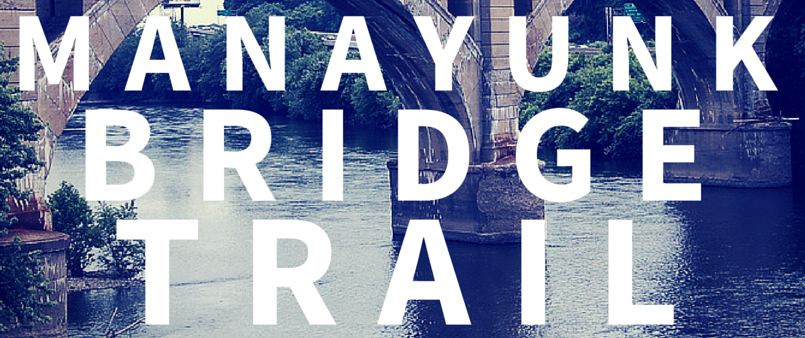
[Editor’s note: This is the first of several blog posts about the Manayunk Bridge Trail, which will open on October 30th.]
In less than a month, the Manayunk Bridge trail will open to great fanfare. This long awaited re-purposing of a SEPTA bridge (originally built by the Pennsylvania Railroad in 1902) is a fantastic achievement and testament to a wonderful collaboration among trail advocates and many agencies, jurisdictions and non-profits, including SEPTA, PennDOT, the City of Philadelphia (Parks and Recreation, Streets and Mayor’s Office of Transportation & Utilities), Lower Merion Township Commissioners and Township Planning and Parks staff, Montgomery County Commissioners and Montgomery County Planning Commission, Delaware Valley Regional Planning Commission, and the Circuit Coalition, in particular, the Manayunk Development Corportation and the Bicycle Coalition of Greater Philadelphia.
The trail was built with funds dedicated by PennDOT, Pennsylvania Dept of Conservation and Natural Resources, the City of Philadelphia, Montgomery County, Lower Merion Township and the William Penn Foundation. The trail was designed by Whitman Requardt & Associates.
Many people have asked about the status of the various trail segments that lead up to the Manayunk Bridge.

The Ivy Ridge Trail lies along the same right of way as the Manayunk Bridge on the old Pennsylvania Railroad inactive rail line. When constructed, it will connect the Manayunk Bridge to the Ivy Ridge SEPTA station parking lot. A feasibility study was conducted by Whitman Requardt & Associates for the City of Philadelphia and Manayunk Development Corporation on this segment in 2014.
The Cynwyd Heritage Trail was completed in 2011 and is owned and maintained by Lower Merion Township.
The Cynwyd Spur is a small section that will connect the Cynwyd Heritage Trail to the Pencoyd Trail and Bridge under construction by O’Neill Properties. This trail has to traverse a steep grade from the Heritage Trail down to the Schuylkill River. Lower Merion Township sought and received funding from DVRPC’s Regional Trail Fund and PA DCNR to conduct a feasibility study of this segment. The study is complete and going to be presented to LMT Commissioners in November 2015. Once that presentation is complete, the final copy of the feasibility study will be posted online.
The Pencoyd Bridge and Trail is being developed by O’Neill Properties as part of a residential development project that is currently under construction. Lower Merion Township required O’Neill Properties to rehabilitate the old Pencoyd Bridge and make it publicly accessible to all users (residents and the public). The Township also required that a trail be constructed in front of the development to connect the Pencoyd Bridge to the end of the O’Neill property to its north. The project is expected to be completed by May 2016.
The Wissahickon Gateway is probably one of the most challenging gaps in the Schuylkill River Trail. It was named among the Pennsylvania’stop ten trail gaps. The trail segment exists between the East Falls and Manayunk sections of Philadelphia where the Fairmount Bikeway (AKA Schuylkill River Trail) narrows to a sidewalk and terminates on a busy arterial street. Bicyclists wishing to continue east or west along the trail must navigate a narrow bikeway, weave through passengers disembarking and embarking from SEPTA buses, and avoid cars entering and exiting from eleven (11) curb cuts along Ridge Avenue and Main Street. According to trail use statistics, trail advocates have found that while the Montgomery County stretch of trail enjoys 12,500 weekly users and the East Falls section 15,000 weekly users, the area between these two sections only sees 2,500 weekly users. This drop off is directly attributable to the gap at Ridge Avenue and the Wissahickon Creek.

An engineering anaylsis for the Wissahickon Gateway was completed in 2013. The Philadelphia Parks and Recreation Department considered both a “street-side” option (in green) and a “river-front” option (in yellow.) Either alternative requires building a new crossing over the Wissahickon Creek and weaving the trail between a PECO substation and SEPTA bus terminal. The cost of the street-side option is estimated at $2.2-2.5 M for approximately 2000’ of new trail.
SEPTA, PECO and a private property owner own the parcels between the Canoe Club driveway and the Pencoyd Bridge. Once the trail’s right of way is obtained by the City of Philadelphia, closing this gap will be the last remaining step in linking 7 miles of trail to the east to Schuylkill Banks and 20 miles west to Phoenixville.
